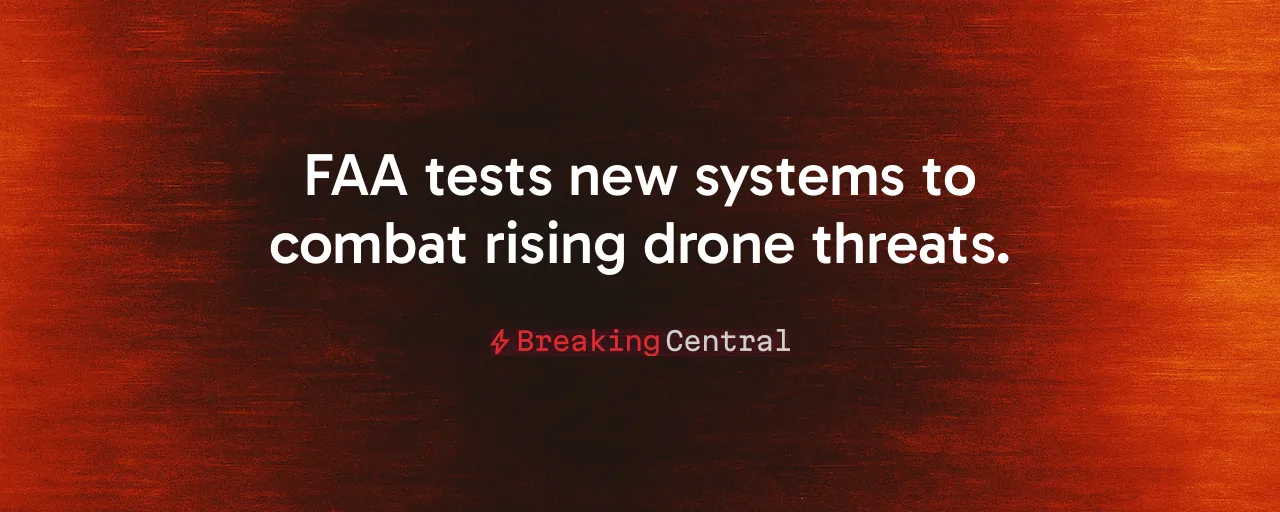Our Skies Under Siege
A commercial jet packed with passengers nearly collides with a four-foot drone just 20 feet from its wing at 3,300 feet. That incident, recorded in March 2025 over a major U.S. airport, is no isolated scare. The Federal Aviation Administration reports over 100 drone sightings near airports every month, with illegal incursions soaring 25.6% in early 2025 compared to 2024. The problem extends beyond careless hobbyists; drones are smuggling fentanyl across borders, spying on military bases, and dropping cellphones into prisons. The FAA's drone-detection tests launching June 16 in Santa Teresa, New Mexico, signal a critical moment. This danger demands a direct confrontation.
Unauthorized drones threaten aviation safety, national security, and public order. Near-misses with airliners, cartel surveillance along the southern border, and probes of power plants reveal a growing crisis. The FAA, working with U.S. Customs and Border Protection and local first responders, is testing advanced detection systems in New Mexico's desert. The stakes are high. A single drone grounded 1,000 flights at Gatwick in 2018, costing millions. Today's threats are even bolder, demanding swift action.
The risks extend beyond airports. Drones have crashed into stadium seating, disrupted police operations, and targeted chemical facilities. Industry leaders, like the American Chemistry Council, warn of attacks mirroring those in Ukraine. President Trump's June 2025 executive orders, focused on airspace sovereignty and drone dominance, call for expanded no-fly zones, local police empowerment, and a National Training Center for Counter-UAS by 2026. Protecting our skies now prevents waiting for disaster.
New Mexico's Battleground for Airspace Security
The FAA's tests in Santa Teresa are a vital push to secure our airspace, moving beyond mere academic exercises. From June 16 to 27, the ASSURE Center of Excellence will operate large government drones and 100 commercial models over the desert and near the old Rio Grande Speedway. The mission is to evaluate radar, radio-frequency, acoustic, and optical systems for spotting rogue drones without disrupting aircraft navigation. Building on trials in Alaska and Cape May, New Jersey, these tests pave the way for nationwide detection networks, with more planned in North Dakota and Mississippi.
New Mexico's harsh, arid environment tests sensors in unique ways, ensuring they work in extreme conditions. The FAA has warned residents not to fly recreational drones nearby during the two-week period. This request prioritizes safety and accurate data, as even one stray drone could derail results or cause a crash. The findings will guide certifications for counter-drone systems at airports, border zones, and public venues. With 411 airport incursions in Q1 2025 alone, the urgency is undeniable.
Counter-drone technology is advancing rapidly. AI-powered sensor fusion, passive radar, and 300-kW lasers are now reality. The Army's modular defenses and Marine Corps' portable jammers show progress, while commercial solutions offer satellite tracking and cyber takeovers. Trump's orders ensure these tools will be paired with training and clear rules, like the expedited Part 108 BVLOS regulations. This approach balances innovation with security, preparing us for threats at events like the 2026 World Cup.
Privacy Worries Miss the Real Threat
Groups like the ACLU, EFF, and CDT argue that drone-detection systems could lead to mass surveillance, threatening free speech and privacy. Their May 2025 statement calls for warrants, data limits, and protections for journalists and activists. These concerns, while worth noting, exaggerate the risks. The threat posed by a drone smuggling drugs or probing a military base is distinct from that of a protester with a camera. The FAA's systems, guided by 46 recommendations from its 2023 advisory committee, target illegal drones without disrupting lawful activity or airspace safety.
The focus on hypothetical surveillance distracts from immediate dangers. Drones have caused multi-million-dollar airline losses, fueled prison violence, and nearly struck passenger jets. The FAA's $341 million in fines since 2022 and 1,937 cartel drone crossings in Texas in one 2023 month underscore the stakes. Civil liberties advocates' demands for more oversight risk paralyzing progress. Law enforcement requires immediate tools, rather than endless debates over unlikely privacy violations. Chaos in our skies represents the true danger, not a surveillance state.
A Plan to Reclaim Our Airspace
The New Mexico tests are a strong start; a broader strategy is essential. Tougher penalties, wider no-fly zones, and certified counter-drone systems require nationwide deployment. Trump's executive orders set a clear path, accelerating Part 108 BVLOS rules and mandating accessible NOTAMs for geofencing. The 2024 FAA Reauthorization Act bolsters enforcement, and Section 2209 will shield critical infrastructure. These measures protect lives and livelihoods while fostering safe drone commerce.
Local law enforcement is desperate for authority to counter drones, especially near borders and prisons. Cartel activity and 100 monthly airport sightings demand action. The DoD's planned counter-drone systems and industry's push for secure facilities highlight the need for speed. Allowing overblown privacy fears or bureaucratic delays to weaken our resolve is not an option. The skies belong to us for protection, not for use as a playground by smugglers or spies.
The path forward is clear. Support the FAA's testing and push for policies that empower police and secure our airspace. The New Mexico trials show we have the technology and determination. Let's use them to deter threats and prevent catastrophe. Ignoring the near-misses, smuggling, and incursions is unacceptable. We have the power to act; let's do it now.
